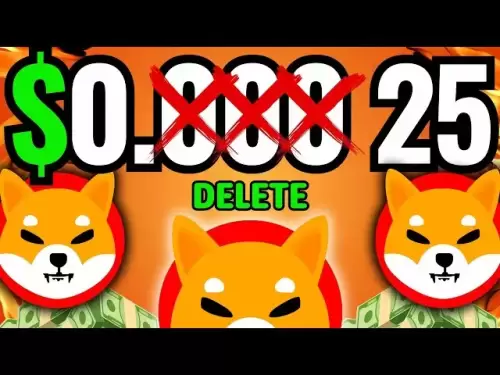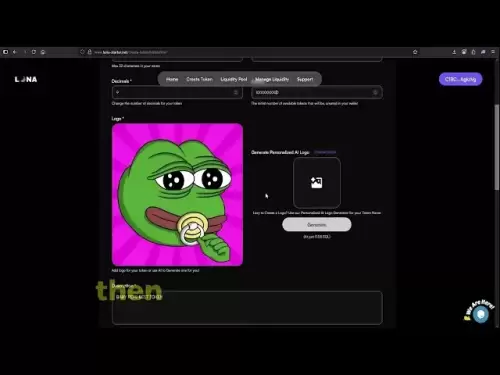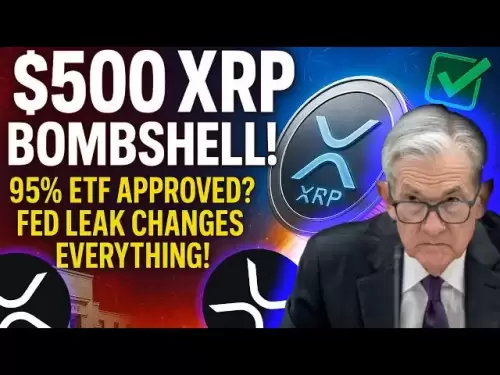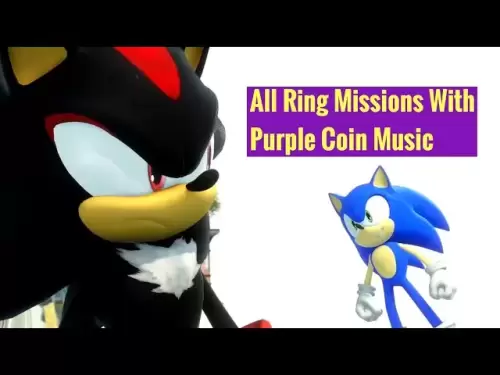-
 Bitcoin
Bitcoin $118900
1.66% -
 Ethereum
Ethereum $3735
1.35% -
 XRP
XRP $3.506
0.71% -
 Tether USDt
Tether USDt $1.000
-0.01% -
 BNB
BNB $799.4
5.78% -
 Solana
Solana $202.0
1.87% -
 USDC
USDC $0.9999
0.00% -
 Dogecoin
Dogecoin $0.2661
1.89% -
 Cardano
Cardano $0.8877
1.59% -
 TRON
TRON $0.3173
2.45% -
 Hyperliquid
Hyperliquid $45.00
2.59% -
 Stellar
Stellar $0.4723
3.40% -
 Sui
Sui $3.970
1.32% -
 Chainlink
Chainlink $19.67
1.94% -
 Hedera
Hedera $0.2710
1.99% -
 Avalanche
Avalanche $25.74
-0.01% -
 Bitcoin Cash
Bitcoin Cash $528.1
1.98% -
 Litecoin
Litecoin $120.1
3.57% -
 Shiba Inu
Shiba Inu $0.00001525
1.26% -
 UNUS SED LEO
UNUS SED LEO $8.989
-0.01% -
 Toncoin
Toncoin $3.304
1.74% -
 Polkadot
Polkadot $4.531
3.38% -
 Uniswap
Uniswap $10.74
2.51% -
 Ethena USDe
Ethena USDe $1.001
0.00% -
 Monero
Monero $325.5
2.44% -
 Pepe
Pepe $0.00001413
1.31% -
 Bitget Token
Bitget Token $4.860
0.85% -
 Dai
Dai $0.9999
0.01% -
 Aave
Aave $307.3
-2.07% -
 Bittensor
Bittensor $448.8
2.91%
How to summarize trading experience?
Documenting trades objectively and analyzing market conditions are crucial steps in summarizing trading experience for valuable learning and improved future performance.
Feb 23, 2025 at 01:01 pm
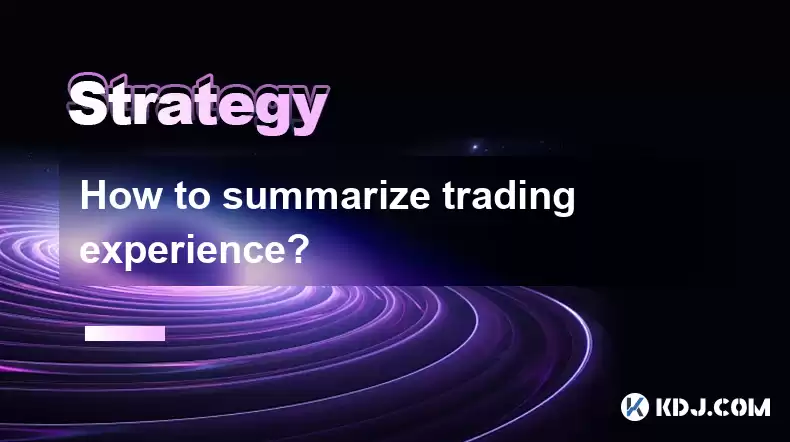
Key Points:
- Document Your Trades Objectively: Avoid bias and subjectivity by recording every trade, including details such as entry and exit points, profit and loss, and analysis.
- Analyze the Underlying Market: Consider factors influencing price movements, such as economic news, political events, and supply and demand dynamics.
- Identify Patterns and Trends: Study historical data to recognize repetitive patterns and identify market trends that can inform future trading decisions.
- Understand Your Risk Tolerance: Determine the level of risk you're comfortable taking based on your financial situation and investment goals.
- Stay Disciplined and Stick to a Plan: Develop a trading strategy that aligns with your risk tolerance and market analysis, and adhere to it consistently.
- Learn from Mistakes and Adjust Your Approach: Every trade presents an opportunity for learning. Analyze unsuccessful trades to identify errors and improve your strategy.
- Use Trading Tools and Platforms: Leverage technology to assist your trading, including charting software, trading bots, and market data feeds.
How to Summarize Trading Experience in Detail:
1. Document Your Trades Objectively
- Maintain a trading journal or spreadsheet that records every trade, regardless of outcome.
Include specific details such as:
- Entry point (time, price, etc.)
- Exit point (time, price, etc.)
- Profit or loss
- Analysis or rationale behind the trade
- Avoid emotional or subjective language, and stick to facts and figures.
2. Analyze the Underlying Market
- Determine the factors driving price movements for the assets you're trading.
- Consider macroeconomic conditions, political events, supply and demand dynamics, and market sentiment.
- Research and stay updated on industry news, earnings releases, and market forecasts.
3. Identify Patterns and Trends
- Use historical data to identify recurring price patterns, such as moving averages, support and resistance levels, and technical indicators.
- Analyze market trends to gauge the overall direction and momentum of the market.
- Use this information to anticipate potential entry and exit points for trades.
4. Understand Your Risk Tolerance
- Evaluate your financial situation, investment goals, and emotional capacity to handle losses.
- Determine an appropriate level of risk you're willing to take, expressed as a percentage of your portfolio.
- Adjust your trading strategies and position sizing accordingly.
5. Stay Disciplined and Stick to a Plan
- Develop a trading plan that outlines your entry and exit rules, risk management parameters, and trading strategy.
- Stick to this plan consistently, even when it's challenging or emotions are running high.
- Avoid making impulsive decisions or altering your plan based on short-term market fluctuations.
6. Learn from Mistakes and Adjust Your Approach
- Analyze unsuccessful trades thoroughly to identify errors in judgment, analysis, or strategy.
- Use this information to improve your trading plan and refine your decision-making process.
- Be willing to experiment with different strategies and adjust your approach as needed.
7. Use Trading Tools and Platforms
- Utilize charting software to visualize price data and identify technical patterns.
- Consider using trading bots to automate trade execution based on predefined rules.
- Subscribe to market data feeds to stay updated on real-time price movements and market news.
FAQs
What are common mistakes made by traders when summarizing their experience?
- Lack of objectivity and allowing emotions to influence trade analysis.
- Focusing solely on the trades themselves without considering underlying market factors.
- Ignoring failed trades or downplaying their significance in the learning process.
- Not understanding their risk tolerance and taking on unnecessary risks.
- Deviating from their trading plan based on short-term market fluctuations.
How can a trader ensure their trade summary is valuable for future learning?
- Maintain accurate and comprehensive records of every trade, with specific details.
- Analyze the underlying market conditions that influenced each trade.
- Identify patterns and trends by reviewing historical data and technical indicators.
- Assess the outcomes of both profitable and unsuccessful trades to identify areas for improvement.
- Stay disciplined and stick to a predefined trading plan throughout the process.
What are the key takeaways from summarizing trading experience effectively?
- Objective analysis helps identify errors and improve decision-making.
- Understanding market dynamics informs trading strategies and entry/exit points.
- Identifying patterns and trends enhances predictive capabilities.
- Risk awareness mitigates losses and preserves capital.
- Discipline and consistent execution lead to improved trading outcomes.
- Learning from mistakes promotes continuous growth and adaptation.
- Utilizing trading tools and platforms enhances trading efficiency and accuracy.
Disclaimer:info@kdj.com
The information provided is not trading advice. kdj.com does not assume any responsibility for any investments made based on the information provided in this article. Cryptocurrencies are highly volatile and it is highly recommended that you invest with caution after thorough research!
If you believe that the content used on this website infringes your copyright, please contact us immediately (info@kdj.com) and we will delete it promptly.
- Pudgy Penguins (PENGU) Soars: Rally Growth and Meme Coin Mania!
- 2025-07-23 19:10:12
- Solana Meme Coins & Market Cap Mania: What's the Deal?
- 2025-07-23 19:15:12
- DOGE Price Poised for Parabolic Surge? DogeOS Unveils Zero-Knowledge Game Changer!
- 2025-07-23 18:30:12
- Bitcoin ETF in Regulatory Limbo: SEC Pause Fuels Uncertainty
- 2025-07-23 18:50:12
- CZ's Altcoin Season Tease: BNB Price Rockets to New Heights!
- 2025-07-23 18:30:12
- DeFi Lending: Fees, Collateral, and the TradFi Invasion
- 2025-07-23 18:50:12
Related knowledge

How to avoid common crypto investment mistakes?
Jul 13,2025 at 01:35am
Understanding the Risks of Crypto InvestmentInvesting in cryptocurrency can be highly rewarding, but it also comes with significant risks. One of the ...

What is a long-short crypto strategy?
Jul 15,2025 at 10:56am
Understanding the Basics of a Long-Short Crypto StrategyA long-short crypto strategy is an investment approach where traders simultaneously take long ...

What is a long-short crypto strategy?
Jul 11,2025 at 01:28pm
Understanding the Basics of Long-Short Crypto StrategyA long-short crypto strategy is an investment approach where traders take both long and short po...

How to use the RSI indicator for crypto?
Jul 12,2025 at 03:56pm
Understanding the RSI Indicator in Cryptocurrency TradingThe Relative Strength Index (RSI) is a momentum oscillator used to measure the speed and chan...

Is copy trading a good strategy for crypto beginners?
Jul 12,2025 at 08:28am
Understanding Copy Trading in the Cryptocurrency MarketCopy trading is a strategy where novice traders replicate the trades of experienced investors a...
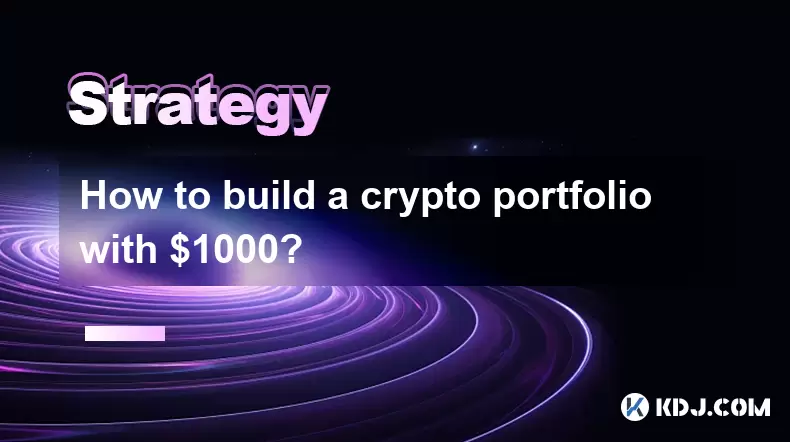
How to build a crypto portfolio with $1000?
Jul 13,2025 at 08:14pm
Understanding the Basics of Cryptocurrency InvestmentBuilding a crypto portfolio with $1000 starts with understanding the fundamentals of cryptocurren...

How to avoid common crypto investment mistakes?
Jul 13,2025 at 01:35am
Understanding the Risks of Crypto InvestmentInvesting in cryptocurrency can be highly rewarding, but it also comes with significant risks. One of the ...

What is a long-short crypto strategy?
Jul 15,2025 at 10:56am
Understanding the Basics of a Long-Short Crypto StrategyA long-short crypto strategy is an investment approach where traders simultaneously take long ...

What is a long-short crypto strategy?
Jul 11,2025 at 01:28pm
Understanding the Basics of Long-Short Crypto StrategyA long-short crypto strategy is an investment approach where traders take both long and short po...

How to use the RSI indicator for crypto?
Jul 12,2025 at 03:56pm
Understanding the RSI Indicator in Cryptocurrency TradingThe Relative Strength Index (RSI) is a momentum oscillator used to measure the speed and chan...

Is copy trading a good strategy for crypto beginners?
Jul 12,2025 at 08:28am
Understanding Copy Trading in the Cryptocurrency MarketCopy trading is a strategy where novice traders replicate the trades of experienced investors a...

How to build a crypto portfolio with $1000?
Jul 13,2025 at 08:14pm
Understanding the Basics of Cryptocurrency InvestmentBuilding a crypto portfolio with $1000 starts with understanding the fundamentals of cryptocurren...
See all articles





















